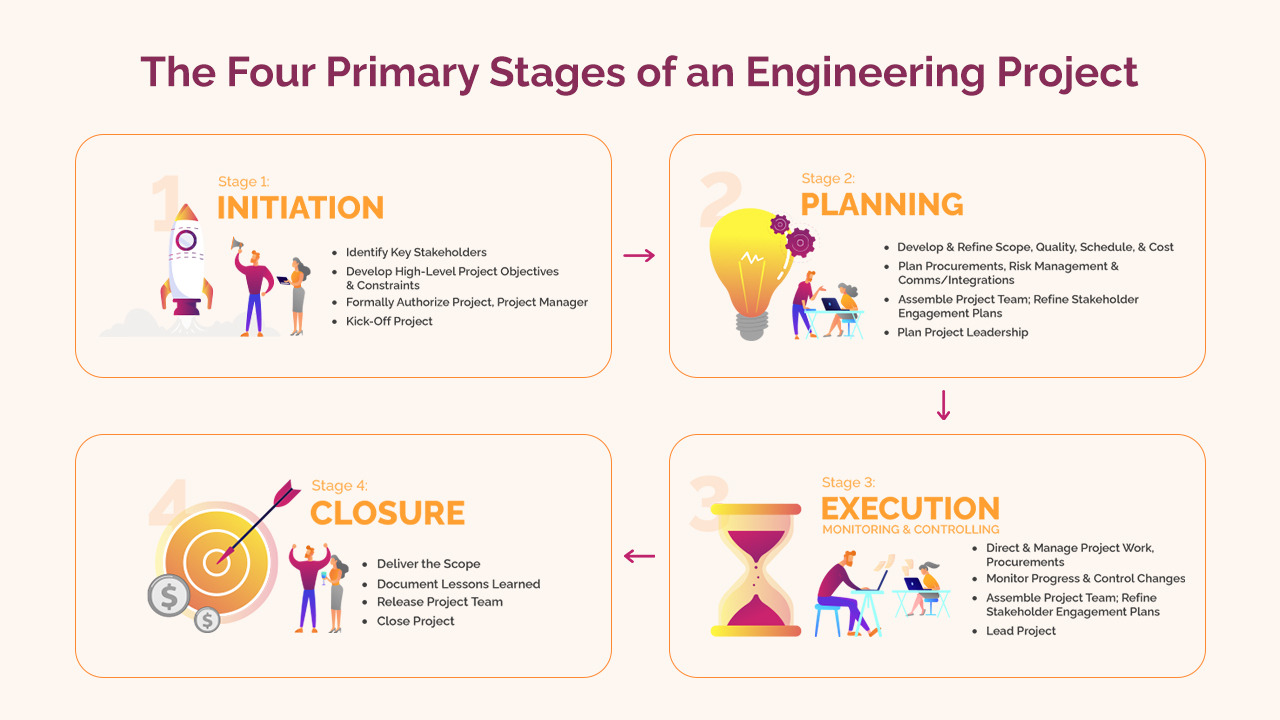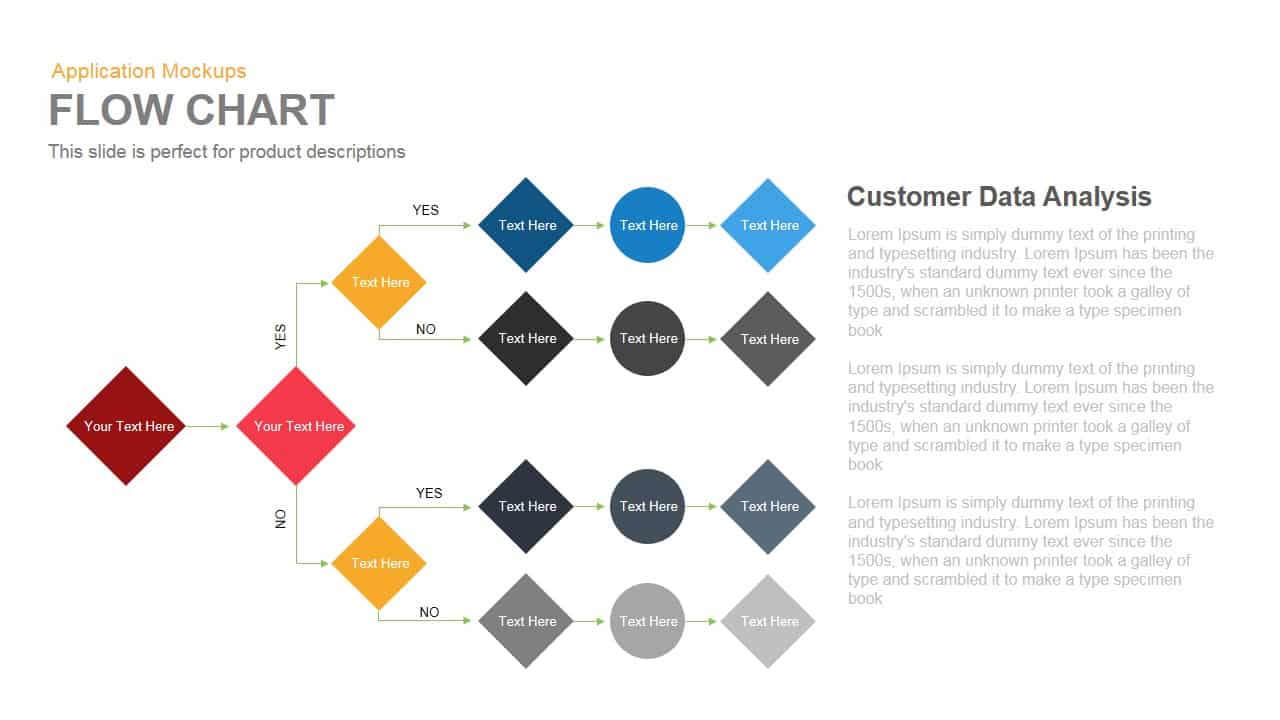4 Phases of The Project Life Cycle

Whether your business goal is large or small, an organized approach that incorporates different departments must be essential. Knowing the four phases of the project management life cycle is vital to hold your project organized and on track from initiation to close.
What is the project life cycle?
The Project Life Cycle is a sequence of activities that are indispensable for achieving project objectives or goals. Projects may have different sizes, scopes, and difficulty levels, but whatever the size: large or small, maybe all projects could be scheduled to the given lifecycle structure.
The project management life cycle refers to high-level processes for carrying a successful project. You can save your money and assets by well-framed project management. Studies show 60% of projects fail due to communication breakdown between the multiple departments. In the phases of the project life cycle, you develop the idea for a project, explain its goals, propose its execution, and guide it to close.
The project management life cycle is usually divided into four phases: initiation, planning, execution, and closure. These stages make up the track that takes your project from the start to the end.

1. Initiation Phase
The initiation phase describes those procedures that are essential to start a new project. The purpose of the project initiation phase is to fix what the project should accomplish. The first requisite of a project is to identify a business need, problem, or opportunity and brainstorm ways that your team can fulfill this need, crack this problem, or grab this opportunity. During this phase, you outline an objective for your project, determine whether the project is possible, and identify the major deliverables for the project.
This phase mainly composed of two main activities:
- Develop a Project Charter.
- Identify Stakeholders.
All the material related to the project is added in the Project Charter and Stakeholder Register. When the project charter is accepted, the task becomes officially authorized.
Steps for the project initiation phase:
- Undertaking a viability study: Classify the primary problem your project will solve and whether your project will deliver a solution to that problem
- Finding scope: Outline the depth and breadth of the project
- Classifying deliverables: Make clear about the product or service to provide
- Identifying project stakeholders: Frame out whom the project touches and what their requirements maybe
- Developing a business case: Use the above standards to compare the possible costs and benefits for the project to determine if it moves frontward
- Creating a report of work: Document the purpose, objectives, scope, and deliverables that you have recognized previously as an operating agreement between the project owner and those working on the project. Summarizing this in a Project Management PPT ensures clarity for all stakeholders.

2. Planning Phase
Project planning phase covers about 50% of the entire process. Planning phase controls the scope of the project as well as the aim of the project. Planning starts with the results of the initiation phase. The output of the planning phase is the input for the execution phase.
During this stage of the project management life cycle, you break down the larger project into smaller tasks, form your team, and schedule tasks. Make smaller goals within the larger project, making sure each is attainable within the time frame. Smaller ends should have great potential for success.
Steps for the project planning phase:
- Making a project plan: Identify the project timeline, together with the phases of the project, the tasks to be performed, and possible constraints.
- Creating a work breakdown structure or a process flowchart: Picture your processes using the chart to make sure team members clearly understand their role in a project.
- Approximating budget and creating a financial plan: Use cost estimates to define how much to spend on the project to get the maximum return on investment. Presenting budget allocations through a Project Management Presentation Template makes financial planning more transparent.
- Collecting resources: make sure that your talented team has the necessary tools to complete their tasks. Otherwise, they will not perform to their full potential.
- Anticipating jeopardize and latent quality roadblocks: Identify problems that may cause your project to stall. Make plans to soften those risks and maintain the project’s quality and timeline.
- Holding a meeting with team and stakeholders: Bring your team on board and outline the project so they can rapidly get to work.

3. Execution Phase
This phase munches most of the project cost, time, and resources as this is the process that produces project deliverables. The execution stage turns your plan into action. In this phase of the project life cycle, the project manager’s job is to keep work on track, form team members, manage timelines, and make sure the work is done according to the original plan. During this phase, the expert’s decisions, conferences, and reporting KPI (Key Performance Indicators) are of major importance.
Inputs are;
- Project Management Plan
- Approved change request
- EEFs (Enterprise Environmental Factors)
- OPAs (Organizational Process Assets)
Outputs are;
- Deliverables
- Work performance data
- Change request
- Project Management plan updates
- Project documents updates
Steps for the project execution phase:
- Generating tasks and organizing workflows: Assign tasks of the projects to the apt team members, making sure team members are not overworked.
- Meeting team members on tasks: Describe duties to team members, providing essential guidance on how they should be finished, and organizing process-related training if necessary
- Interacting with team members, customers, and higher management: Provide updates to project stakeholders at all levels.
- Observing the quality of work: Ensure that team members are meeting their time and quality goals for tasks.
- Managing budget: Display spending and keeping the project on track in terms of assets and resources.
According to your project management schedule and methodology, there are many visual tools that you can apply to see which deliverables have been finished to ensure that your project remains on track. You can use our Gantt Chart template for this.
4. Closure Phase
After the execution phase, we have to check whether the project is on the right track or not. During the closure phase, the monitoring and controlling phase becomes active. Many changes and reviews to improve the project performance have to be done. In the closure stage, you release project resources, provide final deliverables, and ensure the project’s success. After execution, don’t think that your project manager’s job has been done—there are still important things to do, including assessing what did and did not work with the project.
Summary
The initiation phase mainly comprised of two main activities
- Develop a Project Charter
- Identify Stakeholders
The stakeholder’s register and project charter are also useful in other project management process groups like the planning process.
The planning stage determines the scope as well as the aim of the project. It includes creating a set of plans that direct you through the execution and closure phases of the project. The executing step involves those activities that are described in the project management plan. It is the longest phase of the project life cycle and munches maximum effort and resources. Operations taken in the execution stage may affect the project management plan or documents.
An important task in the execution phase is:
- Execute Project Management Plans
- Direct and Manage Project Execution
- Execute Task Assignments
- Conduct Progress Status Meetings, etc.
During the execution stage, the result may need re-base lining and bring up to date to existing project requirements.
The monitoring and controlling stage confirms that the deliverables are according to the project management plan before the closing phase. The main focus of this stage is to classify any changes made from the point of the project management plan to determine preventive action against any unforeseen result.
The closing phase is the process that performs an organized shut down of the project at the finish. This article only provides a nutshell of the project management life cycle. Each phase has several sub-phases that we will discuss in the coming posts.


